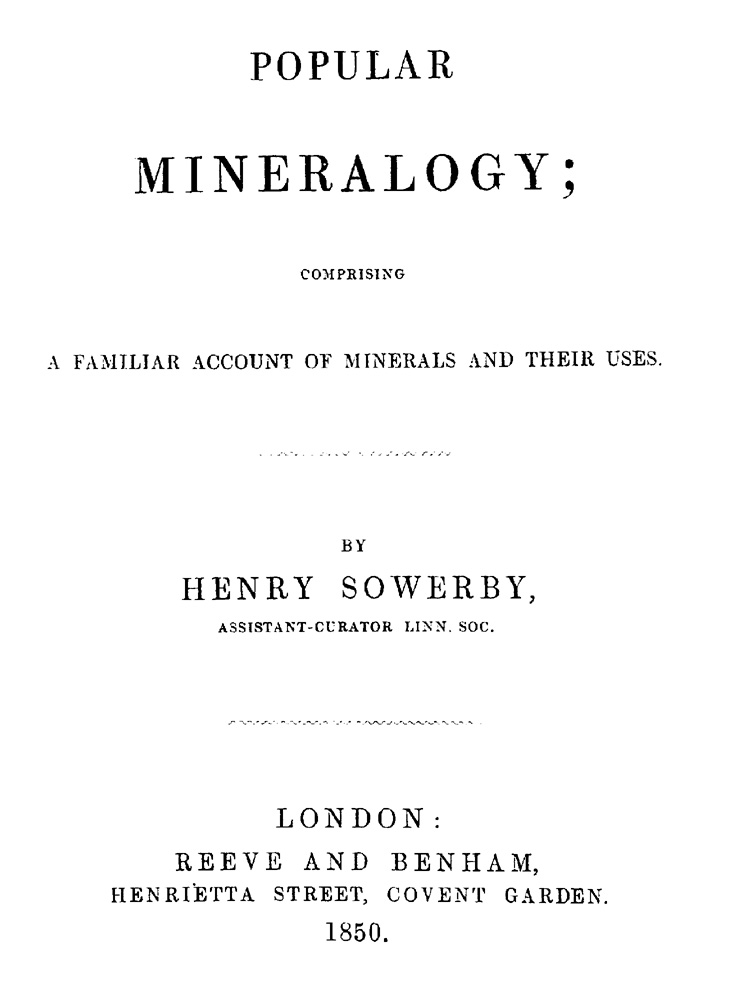SOWERBY, Henry.
(1825 – 1891)
Member of the famous family of illustrators, Henry was the younger son of the first George Brettingham Sowerby [1788-1854] and brother to George Brettingham II [1812-1884]. Henry was an assistant librarian to the Linnean Society of London from 1843 to 1852. Believing his prospects would improve, he immigrated to Australia in 1854. There he became a draughtsman at Melbourne University and subsequently instructor of drawing in the Australian state schools. Henry devoted himself to gold mining the last twenty years of his life.
Biographical references: BBA: I 1024, 221-222. • Cleevely, Bibliography of the Sowerby Family, 1974. • DNB: 18, 713 [by B.B. Woodward]. • Gentleman's Magazine: 2 (1854), 406. • Sarjeant, Geologists, 1980: 3, 2151. • WBI.

1. English, 1850.
Popular | Mineralogy; | Comprising | A Familiar Account Of Minerals And Their Uses. | [wavy rule] | By | Henry Sowerby, | Assistant-Curator Linn. Soc. | [wavy rule] | London: | Reeve And Benham, | Henrietta Street, Covent Garden. | 1850.
8°: π4 B-Z8; 180l.; [i]-viii, [1]-344, [1]-8 p., 20 chromo-lithographic plates showing 80 depictions of various mineral specimens. Page size: 154 x 120 mm.
Contents: [i-ii], Title page, verso "[ornament] | Printed By Reeve And Nichols, | ..."; [iii], Dedication to Alexander Crichton.; [iv], Blank.; [v]-viii, "Preface."-dated 5 October 1850.; [1]-328, Text.; [329]-338, "Index."; [339]-340, "List Of Plates."; [341]-344, "Glossary."; [1]-8, "List of Works | ... | Published By | Reeve And Benham."
Very scarce. Published as volume 12 of Reeve's Popular Natural History Manuals series. This is the first work to use chromo-lithography to illustrate mineral specimens. In the preliminaries, Sowerby describes the distribution of minerals, a mineral collecting trip to Cumberland, the forming of collections, and the character of minerals. This is followed by the largest section of the text that describes the minerals pictured on the plates. Finally, an index, a list of plates and a glossary of terms conclude the work. Although rather crude in execution, the renderings of the species on the plates are for the most part recognizable.
Bibliographical references: BMC: 5, 1981. • Dana's 7th (Bibliography): 81. • NUC: 559, 88 [NS 0771492].
.